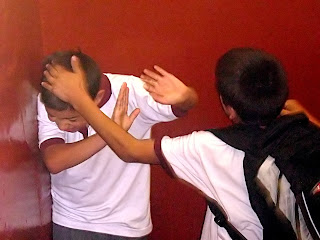

In the United States, an estimated 55 million students are enrolled in pre-kindergarten through twelfth grade. Another 15 million students attend colleges and universities across the country. While U.S. schools remain relatively safe, any amount of violence is unacceptable. Parents, teachers, and administrators expect schools to be safe havens of learning. Acts of violence can disrupt the learning process and have a negative effect on students, the school itself, and the broader community.
School violence is a subset of youth violence, a broader public health problem. Youth violence refers to harmful behaviors that may start early and continue into young adulthood. It includes bullying, slapping, punching, weapon use, and rape. Victims can suffer serious injury, significant social and emotional damage, or even death. The young person can be a victim, an offender, or a witness to the violence-or a combination of these.
What is the extent of school violence in the United States?
The first step in preventing school violence is tounderstand the extent and nature of the problem. TheCenters for Disease Control and Prevention (CDC), theDepartment of Education, and the Department ofJustice gather and analyze data from a variety ofsources to gain a more complete understanding ofschool violence.
School Environment
•Approximately 38% of public schools reported atleast one incident of violence to police during 2005-2006.
•In 2005, 24% of students reported gangs at theirschools. Students in urban schools were more likelyto report gang activity than suburban and ruralstudents.
•From 2003-2004, 10% of teachers in city schoolsreported that they were threatened with injury by students, compared with 6% of teachers in suburbanschools, and 5% in rural schools.
Risk Behaviors
In 2005, a nationwide survey of students in grades 9-12reported the following risk behaviors:
•6.5% of students carried a weapon on schoolproperty in the 30 days preceding the survey.Weapons included a gun, knife, or club.
•7.9% of students were threatened or injured with aweapon on school property in the 12 monthspreceding the survey.
•13.6% of students were involved in a physical fighton school property in the 12 months preceding thesurvey.
•8.4% of students attempted suicide one or moretimes in the 12 months preceding the survey.
•25.4% of students were offered, sold, or given anillegal drug on school property in the 12 monthspreceding the survey.
What are the risk factors forperpetrating youth violence?
Research on youth violence has increased ourunderstanding of the factors that make somepopulations more likely to commit violent acts. Havingsuch risk factors increases the likelihood that a youngperson will become violent, but these factors are notnecessarily direct causes of youth or school violence. Such risk factors include:
Individual Risk Factors:
•History of violent victimization
•Attention deficits, hyperactivity, or learning disorders
•History of early aggressive behavior
•Association with delinquent peers
•Involvement in gangs
•Involvement with drugs, alcohol, or to
•Low IQ
•Poor academic performance
Action Plan
Real Audience and purpose:
This blog was created to inform and educate secondary students grades 9-12 on school violence.
Integration of subjects/Content Areas:
Subjects That Correlate: (Taken from the TN Department of Education website/Success Skills Through Service Learning Education Standards 2009-2010)
The Success Skills through Service Learning is designed to provide a comprehensive approach focusing on ethical, social and intellectual skill development. Mastering the standards will enable students to develop personal integrity based on positive values; to learn respect and responsibility; and to learn citizenship in schools, and community.
The most effective way of learning these skills is in context, placing learning objectives within a real environment.
Standard 2.0
The student will develop social skills that are necessary for effectively relating to others in society.
Learning Expectations
The student will:
1. Utilize competent communication skills (including effective listening and response skills)
2. Work cooperatively with others and contribute to group with ideas, suggestions and effort
(teamwork).
3. Respect others (be aware of and sensitive to diversity; empathetic to a wider range of people,
issues and places)
4. Demonstrate understanding, friendliness, adaptability, and politeness in group settings
5. Know negotiation skills (work toward an agreement that may involve exchanging specific
resources or resolving divergent interests)
Performance Indicators: Evidence Standard is Met
The student is able to:
1. Communicate instructions to accomplish a task
2. Demonstrate the ability to work cooperatively in developing a team action plan
3. Work and interact with people of diverse cultures, backgrounds, abilities, and opinions in various
settings
4. The student will demonstrate appropriate social behaviors in a variety of settings
5. Exhibit basic skills of conflict resolution



No comments:
Post a Comment